Jul 10, 2019
Social Isolation and Loneliness: Insights from Rural Clinical Providers and Other Experts
Related Article
The
Rural-ness of Social Isolation: Information from Recent
Public Health Research
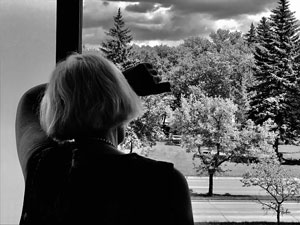 "When I ask patients who they want us to
call when they're sick or who to call with medical test
results and I watch those patients think and then answer,
'Well, there's no one.' That's what I find heartbreaking.
To have no ally, no advocate. No one. That
patient is isolated," Dr. Kimberly Becher said.
"When I ask patients who they want us to
call when they're sick or who to call with medical test
results and I watch those patients think and then answer,
'Well, there's no one.' That's what I find heartbreaking.
To have no ally, no advocate. No one. That
patient is isolated," Dr. Kimberly Becher said.
Becher, a native West Virginian and family medicine physician practicing in Appalachia, shared that she and her colleagues perform a variety of screenings that include risk assessments for the social determinants of health in their Federally Qualified Health Center (FQHC). The answers they get give important clues to patients' social support systems.
"For example, we'll ask, 'Do you have someone you can depend on? Is it hard to get enough food? Do you worry about having a place to live? Do you worry about not having anyone to help you when you're sick?' Questions like that," she said, noting that most patients give answers suggesting all is well. For those who provide answers of concern, she'll explore further but often finds that most of those patients actually have strong support, even though the social connections they identify are few.
Becher's direct patient care experience relates to one of the research challenges for studying social isolation: Research looking at the quantity of social contacts as a measure to determine social isolation doesn't often account for the quality of those social contacts.
Dr. Clifford Singer, an academic psychiatrist and geriatrician caring for rural patients in Maine, wrote in a 2018 journal review (Journal of Aging Life Care, Spring 2018, p. 4-8), "We must also remember that not all who are isolated are lonely and not all who are lonely are isolated. Being in unhealthy relationships can be more stressful than being alone."
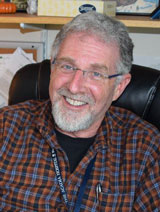
Singer, who is also chief of Geriatric Mental Health and Neuropsychiatry at Acadia Hospital and Eastern Maine Medical Center, suggests that research around the cause and effect of social isolation's health impacts should be viewed with caution, noting that studies don't often risk-adjust for patients with pre-existing or chronic health conditions that make them vulnerable to social isolation.
Singer noted that some researchers and advocacy groups view social isolation as a public health crisis for multiple reasons, equating it with smoking or linking it to heart disease. However, he believes the most serious element of the problem is not its proposed physical impacts on health, but instead how the problem uncovers the lack of healthcare system infrastructure needed to care for patients with minimal or absent social support.
"Yes, there are plausible physiologic mechanisms that might make social isolation and loneliness independent risk factors that impact health, but they still need to be confirmed," Singer said. "I believe that social isolation is an urgent problem because it defies and challenges adequate healthcare in so many other ways. People are languishing in hospitals, languishing in emergency rooms, languishing in nursing homes for lack of adequate social support. Their families and caregivers need support. That definitely makes it a huge issue — and an expensive one."
Economics of Objective Social Isolation
A 2017 study using data from the 2006, 2008, and 2010 waves of the University of Michigan Health and Retirement Study looked at Medicare spending related to objective social isolation for 3 categories of beneficiaries — well-connected, not isolated, and isolated — and found that "objective isolation is associated with increased Medicare spending, while loneliness's association appears opposite." The study noted that unadjusted monthly spending was $986 for well-connected seniors and $1,215 for the isolated."
A Rural Psychologist Talks about Definitions
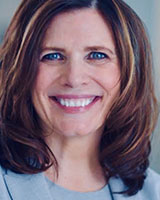
Dr. Kristi Phillips is the chair-elect of the American Psychological Association's Committee on Rural Health. In her rural Minnesota practice, she said social isolation is a significant problem, especially during winter months. She talked about the definition of loneliness, a feeling sometimes connected to social isolation.
"Loneliness comes from a desire for satisfying social contacts," she said. "Often social isolation is linked to sadness or the feeling of emptiness. Loneliness differs from solitude, or living alone, which can either be chosen or forced and might be healthy or unhealthy. It's also important to understand that people can have many relationships, but not all of those relationships might offer satisfaction. When relationships are not fulfilling, a sense of social isolation can result, even if an individual is in the vicinity of others."
Phillips said when she finds herself caring for a patient she senses might be lonely or who admits to loneliness, it's important to evaluate their social connectedness.
"An initial step is to have that conversation with a client in order to get a clear picture of their circumstances to determine whether social isolation is getting in the way of their overall functioning," she said. "Then you can begin to sort out social isolation from a client's actual desire for solitude, which are two very different things."
What is the first clue to the sometimes well-hidden feeling of loneliness or forced isolation? Phillips suggested that apathy plays a big part.
"Patients may just see their lives as full of barriers with no options," she said.
Becher and Singer expressed similar thoughts. Becher said her experience is that true social isolation seems to trigger a "profound apathy."
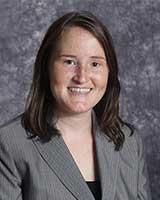
"When you feel like you have no support and you're overwhelmed by other negative social determinants, you feel helpless, without options," she said. "Or you can't access food and have no choice about getting to a healthcare appointment. When you're dependent on others but you don't have others to rely on. This creates profound apathy. Appalachia is notorious for this 'doom and despair' attitude: 'What's the point of me eating healthier when I'm just going to smoke, get cancer, and die anyway?' For those who are isolated and feel lonely, sometimes they either become depressed or their depression deepens. I think many could change even though they have to do it alone, but they just don't feel empowered to gain access to the things that could improve their health."
Singer also suggested that apathy plays a part in social isolation. When it's discovered, attention is needed as to its cause.
"Sometimes there seems to be a futility to prescribing social activity, social connectedness, and social networking because there are often significant obstacles," he said. "Patients may agree to engage in new social events or try to make new friends, but it doesn't happen because it's difficult. Why is it difficult? Because there's a lot of obstacles to overcome when it's not family or other long-term relationships. We see this when someone finally moves into assisted living or a retirement community. We assume that because they're around more people, they'll automatically develop new relationships. But making those new relationships isn't easy, especially if there's hearing impairment, cognitive impairment, or mobility problems along with a high prevalence of depression and apathy that interferes with the desire and motivation to reach out to others."
What about Apathy?
Becher, Phillips, and Singer all cited apathy as a clinical issue. Apathy is associated with the loss of motivation or initiative and the loss of pleasure and display of emotions. It can be seen with depression but is different from depression and is treated differently than depression.
Rural Troubles: Geography, Scattered Family Structure, Transportation, and Technology
The clinicians each noted that their specific local geography and transportation infrastructure significantly impacted their patients. Becher describes the West Virginian landscape in her practice area.
"Isolation here is associated with true geographical isolation," she said. "Since I have a lot of patients with no phone, I'll have to leave a message with someone who then gets on a four-wheeler because roads aren't passable and creeks have to be crossed in order to deliver that message. Our geography causes barriers that contribute to the feelings of isolation and loneliness for some of my patients."
Singer talked about another barrier in Maine that contributes to isolation as well as many other health conditions: older adults without local family members.
In both cases we now have older adults who are not living near their children or their siblings and that creates isolation.
"One of the big problems we have is related to two populations of older adults," he said. "One segment of the population has lived here all their lives but their children have moved away, so they are isolated from their families and are also experiencing the deaths of their own generation. The other segment are those that moved here when they were still healthy. They retired to Maine because Maine is a great place to retire. They aged in place here away from their family. In both cases we now have older adults who are not living near their children or their siblings and that creates isolation."
For Phillips in Minnesota, transportation, geography, and weather — specifically the 4 to 6 months of winter — also contribute to social isolation and loneliness.
"Lots of the isolation problems I see are due to long distances between a client's residence and where they can find meaningful activities or join their friends," Phillips said. "It's especially a problem during winter when clients can't drive because of bad roads or very low temperature conditions. Sometimes it might be that their car's no longer reliable and they can't afford a new one. Where I practice, there's no public transportation option to fall back on."
Phillips also said for some of her older adult clients, it might even be a very short distance that contributes to isolation.
"Someone may live five — or even just three — blocks from a senior center, but walking on sidewalks with snow and ice is a set-up for a fall and a fractured hip," she said. "If no family member, friend, or caregiver can assist them, they won't risk going out during our harsh winters. That can keep them inside for weeks. Hearing about these issues and seeing how transportation barriers dramatically impact their mental health, it is understandable how social isolation and loneliness can occur."
Phillips talked about another barrier she discovered during her healthcare system's and professional group's work on technology solutions for mental health.
"I've recently been more involved with technology solutions for healthcare access issues and patient self-care apps," she said. "Some of the self-help tools are amazing. However, there is still an issue: Despite the increased funding for internet capacity, many rural patients still haven't been able to afford that technology in their homes. It should be recognized that not having internet services prevents people from communicating the way the rest of modern society is communicating. Again, that can create a sense of isolation."
Interventions and Solutions for Social Isolation: Networks, Schools, and Technology
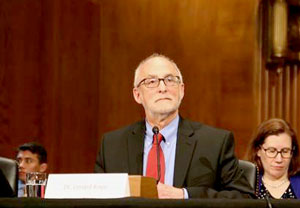
Dr. Lenard Kaye, Professor of Social Work at the University of Maine, is also the director of the university's Center on Aging and previously served on the National Advisory Committee on Rural Health and Human Services. He is passionate about the issues around rural social isolation and loneliness, considering them a significant public health problem. He talked about the implications of forced social disengagement when one spouse is hospitalized or requires nursing home placement while the other spouse remains at home without transportation to even be able to visit. He emphasized that isolation is sometimes the result of rural America's culture: "keeping a stiff upper lip," the fear of losing autonomy, maintaining the cherished value of privacy, and the tendency of older rural adults to resist taking advantage of available benefits to ease their burdens.
Actively networking with healthcare systems, professional societies, philanthropy groups, and other interested individuals, Kaye is clear about a three-point path to address social isolation and loneliness:
- Use a systems approach to collaborate with multiple organizations – including medical and social organizations throughout a community — to work together to address the issues.
- Create a core group of navigators to work with older adults ensuring an initial — and ongoing — connection in which support services match their individual needs.
- Create a public relations campaign to awaken the broader community to the multiple issues associated with social isolation.
Kaye reviewed his "bottom line" on social isolation.
"Especially in rural areas, too many people have fragile, crumbling, or non-existent social networks, devoid of family, friends, and neighbors," Kaye said. "I don't think this is solely resolvable by a professional workforce. We need to discover the natural social support networks that exist in every community and work to keep those strong."
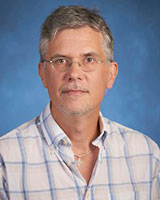
Dr. Kai Schafft is a professor at Pennsylvania State University and president-elect of the Rural Sociological Society. A self-described urban-to-rural migrant who lives in rural New York, he is very familiar with the rural community network that depends on churches, schools, and healthcare organizations. He shared his perspective about why those working to decrease social isolation might consider partnerships with schools.
"While healthcare organizations might talk about health literacy, we [rural sociologists] will talk about 'rural literacy:' the way that people read and understand their local communities to understand opportunities," Schafft said. "That gets right back to social isolation and understanding how community cohesiveness and its intentional efforts can thicken social networks and create social ties that could make a difference."
The clinical providers also discussed support networks currently in place. Becher said about a year ago their FQHC began using CAPgate, a web-based case management data tool that creates an electronic flag when an outreach need for one of their patients is discovered.
"CAPgate staff are in Charleston and because we're in the middle of nowhere, sometimes needed services don't reach our patients, even being tied to a system like that," she said. "To bridge that gap, we're trying to establish more local networks and get them listed all together in a booklet. We also have another project we're working on, the Loneliness Project, where we call people we feel will benefit from simply having someone to talk to."
Phillips said she'd like to see a rural-specific screening tool that could also be a part of technology solutions and telehealth since transportation and access are important barriers in rural Minnesota.
Singer, too, is very optimistic about technology's ability to offer social connectedness, from remote patient monitoring interventions, to voice reminders for medication compliance, to meal reminders for nutritional support, perhaps even robots providing some element of personal care, "since we know people tell robots a lot of things they wouldn't tell another person."
Singer said it's important to realize that we are never going to change human nature and there will always be people who are unreachable. However, he believes we can assist people to "innovate on their own based on their needs" and use an informal community to help them take care of themselves.
"We have to recognize that communal living isn't for everybody, especially for rural people," Singer said. "But I think that social networks can be developed in rural communities like volunteer programs and helping older adults help older adults. There are programs across the country that make these types of connections. I believe that is the formula for resolving the social isolation scourge."
Detection and Intervention Tools for Social Isolation and Loneliness
Social determinant of health screening tools that include social connectedness questions:
- PRAPARE: Protocol for Responding to and Assessing Patient Assets, Risks, and Experiences, National Association of Community Health Centers
- Standardized Screening for Health-Related Social Needs in Clinical Settings, National Academy of Medicine
- The Accountable Health Communities Health-Related Social Needs Screening Tool, Centers for Medicare and Medicaid Services
Measurement tools specific for social isolation and loneliness:
- Social isolation:
- Loneliness:
- For practicing clinicians:
- A Practical Approach to Assessing and Mitigating Loneliness and Isolation in Older Adults, 2019 Journal of the American Geriatric Society

